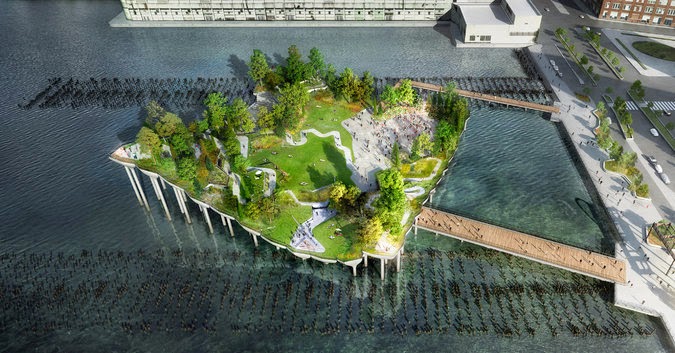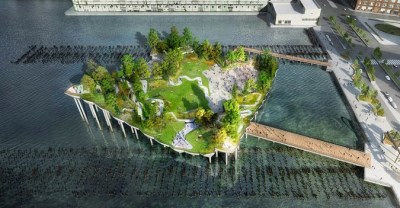
I’m immersed in writing TrendsWatch 2015 for the rest of the month, which leaves limited bandwidth for blogging. For the next few weeks, I’m going to be sharing brief thoughts, the kind of “here’s a 15 minute essay on why I think this story is interesting” I usually post in Monday Musings.
 |
| Artist’s rendering of the park, as presented in the NYT article. Pier55, Inc./Heatherwick Studio |
- If you want to give people a gift that you expect them to use, you ought to ask them what they want. Contrast Dillard’s process, for example, with the extensive input (gathered through over 160 community meetings) used to shape the much more modest 11th Street Bridge Project in DC, which likewise will create a park out of an abandoned river structure. Not that there isn’t room for vision and leadership, but so often visions get built, and then sit empty while the founder wonders why nobody comes.
- 20 years of operating support sounds great, but after twenty years the city (or the Trust, or whoever) has to pick up the costs. What are the chances that the Dillard family foundation, relying as it can on its endowment, will have established a sustainable, self-sufficient business model by then? And to that point;
- How will this park and its performance venues affect the overall cultural economy of the community? The article notes two other projects in the works (Culture Shed at Hudson Yards and the Performing Arts Center at the World Trade Center site) that may compete for the same audience. Set in Stone, the 2012 report from the University of Chicago’s Cultural Policy Center, has documented the overbuilding of culture in the US between 1994 and 2008. Is it doing us any favor to build a cultural infrastructure too big for the cultural carrying capacity of the Chelsea Pier area?








